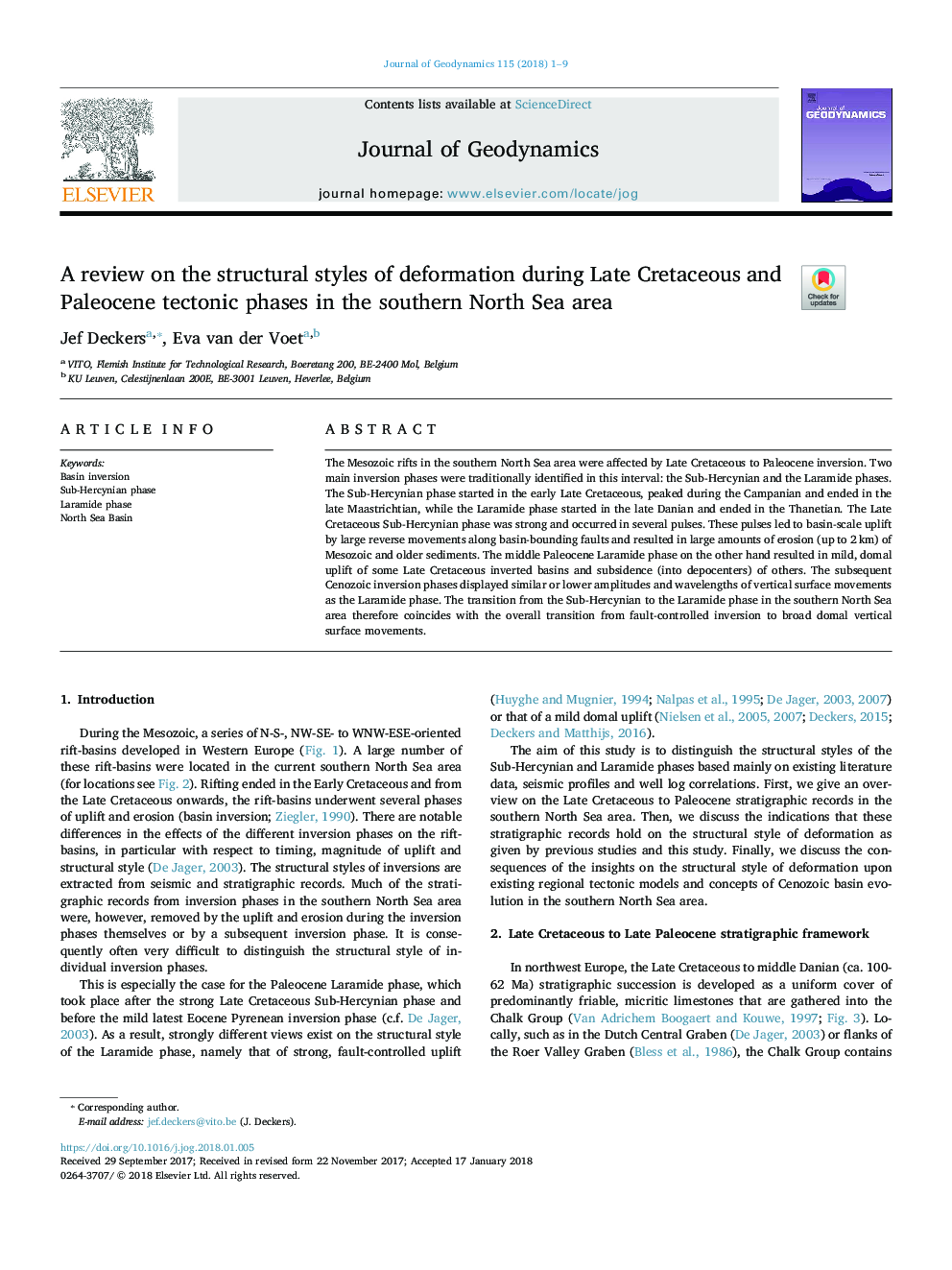| Article ID | Journal | Published Year | Pages | File Type |
|---|---|---|---|---|
| 8908419 | Journal of Geodynamics | 2018 | 9 Pages |
Abstract
The Mesozoic rifts in the southern North Sea area were affected by Late Cretaceous to Paleocene inversion. Two main inversion phases were traditionally identified in this interval: the Sub-Hercynian and the Laramide phases. The Sub-Hercynian phase started in the early Late Cretaceous, peaked during the Campanian and ended in the late Maastrichtian, while the Laramide phase started in the late Danian and ended in the Thanetian. The Late Cretaceous Sub-Hercynian phase was strong and occurred in several pulses. These pulses led to basin-scale uplift by large reverse movements along basin-bounding faults and resulted in large amounts of erosion (up to 2â¯km) of Mesozoic and older sediments. The middle Paleocene Laramide phase on the other hand resulted in mild, domal uplift of some Late Cretaceous inverted basins and subsidence (into depocenters) of others. The subsequent Cenozoic inversion phases displayed similar or lower amplitudes and wavelengths of vertical surface movements as the Laramide phase. The transition from the Sub-Hercynian to the Laramide phase in the southern North Sea area therefore coincides with the overall transition from fault-controlled inversion to broad domal vertical surface movements.
Keywords
Related Topics
Physical Sciences and Engineering
Earth and Planetary Sciences
Earth-Surface Processes
Authors
Jef Deckers, Eva van der Voet,
